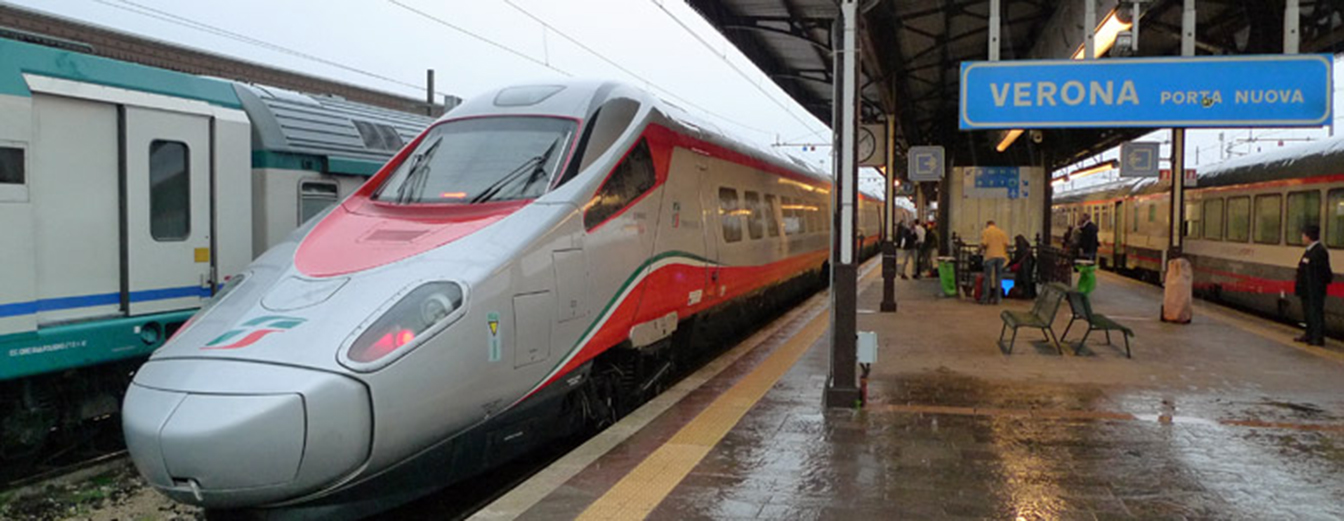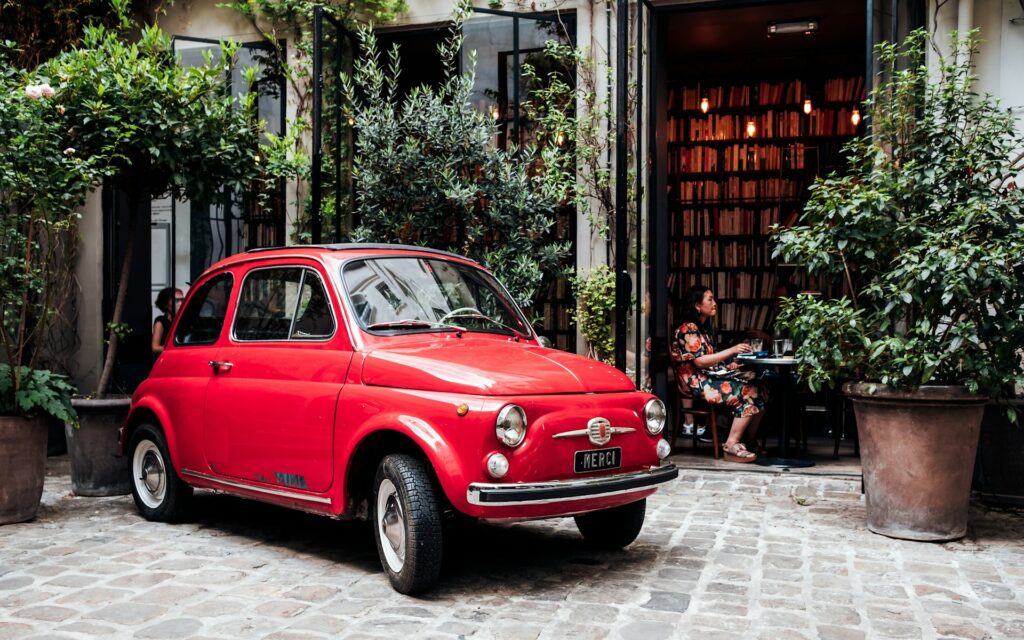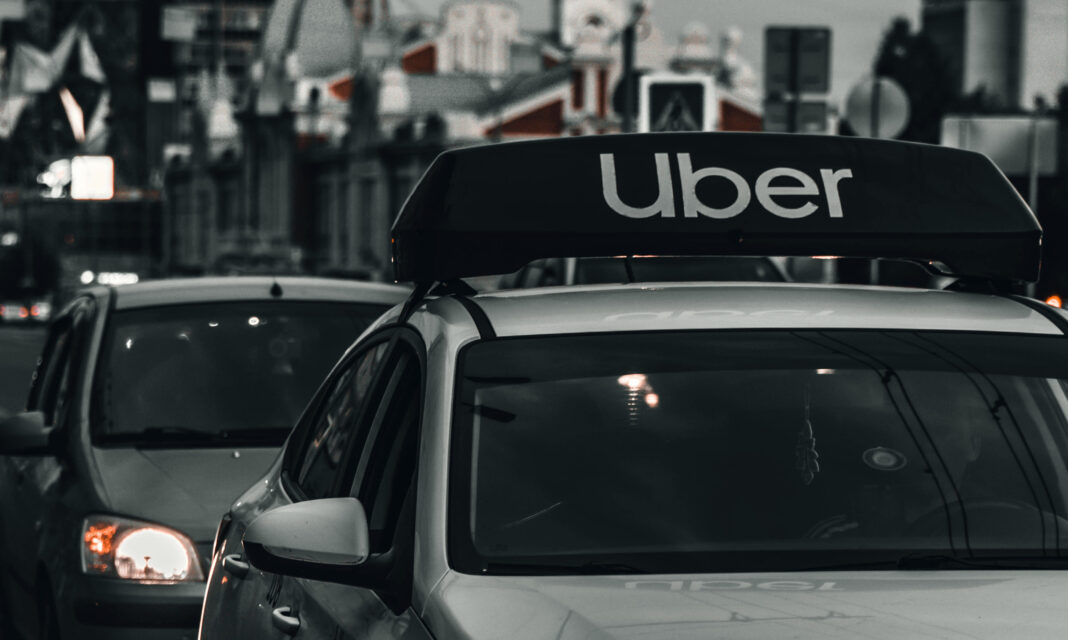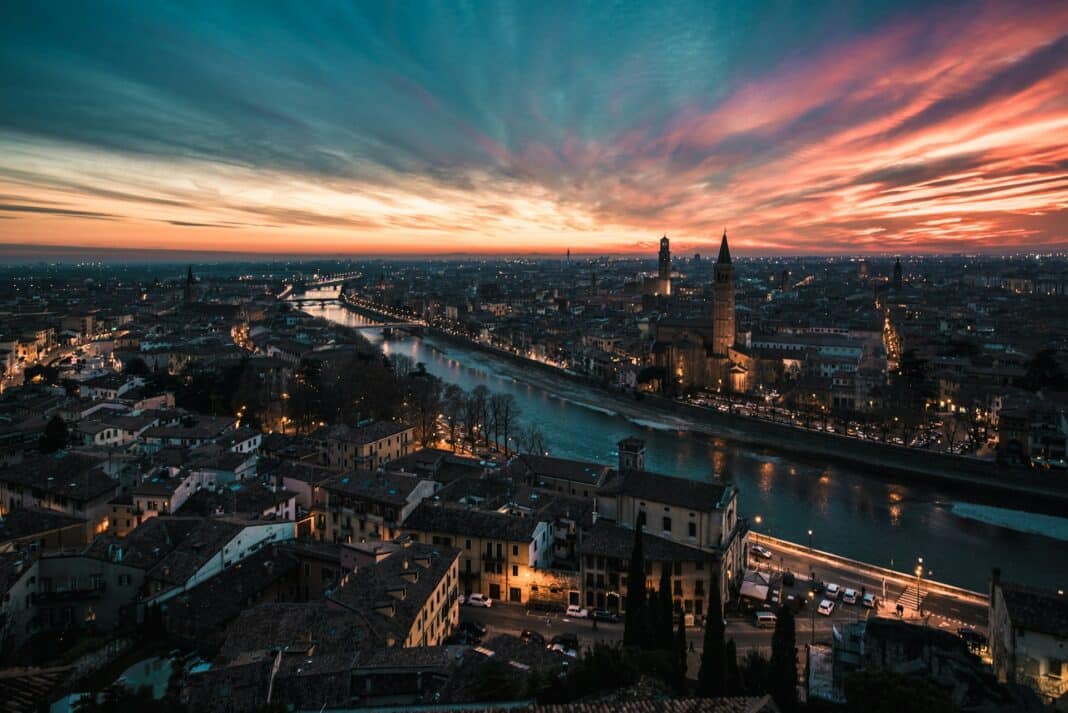Table of Contents
Verona and Venice, the two most absolutely enchanting Italian cities (in our opinion), are a mere 115 kilometers apart, making Venice a perfect destination for a day trip from Verona or just your next stop as part of a longer itinerary across Italy. And when you want to go from the historical charm of Romeo and Juliet’s Verona to the captivating canals of Venice, getting between these two romantic Veneto cities is super easy and convenient! Since this is one of the most popular routes
Take a Train: The BEST way to get from Verona to Venice

Taking the train is undoubtedly the most popular and efficient way to get from Verona to Venice, and it’s my personal favorite way. With frequent departures throughout the day, and a short travel time, it makes for a relaxing and cheap journey between the two cities where I don’t have to do anything but relax with a book on the way there. All trains pick up from Verona’s Porta Nuova train station, and they’ll all drop you off right next to Venice’s iconic Grand Canal. There’s a few different options when it comes to the trains, depending on whether you want a national line, or a regional train. Here’s a breakdown of the train options:
High-Speed Trains (Frecciarossa, Italo):
- Travel Time: Approximately 1 hour and 10 minutes
- Cost: €18 – €80 (price varies depending on booking time, seat type, and chosen train operator)
- Frequency: Several departures daily
- Benefits: Fastest option, comfortable seating, luggage storage, onboard amenities (may vary)
- Drawbacks: Slightly more expensive than other options
Regional Trains (Regionale, Regionale Veloce):
- Travel Time: 1.5 – 2.15 hours
- Cost: €11 – €25
- Frequency: Regular departures throughout the day.
- Benefits: Most affordable option, scenic journey through the Italian countryside.
- Drawbacks: Longer travel time, fewer amenities compared to high-speed trains.
Booking: Tickets can be purchased online through official train operator websites (Trenitalia, Italo), travel booking platforms, or at the Porta Nuova train station. Booking in advance is recommended, especially during the peak tourist seasons. Personally, I like to book all my trains through the Omio Website or App. It’s very quick to sort through all trains options for any route in Europe, and it keeps all my tickets in one place. Again, you can also book when you get to the train station, but during peak tourist hours the tickets may not be available, or you might not be able to seat your party together.
Take a Bus: The Budget Friendly Option

If you’re seeking a more affordable option, buses still offer a comfortable and reliable journey to get from Verona and Venice. While slightly slower than trains, buses provide a cost-effective way to travel. It’s also worth mentioning that if you’re moving large luggage, then a bus is probably the better method here. Trains offer overhead storage for small carry-on roller bags, but they have limited space for larger suitcases. A bus however has storage underneath for big bags. Just something to keep in mind!
- Travel Time: Approximately 1 hour 45 minutes.
- Cost: €7 – €17 (price varies depending on operator and booking time).
- Frequency: Regular departures throughout the day.
- Benefits: Affordable option, comfortable seating, luggage storage.
- Drawbacks: Longer travel time than trains, potential for traffic delays.
Booking: Tickets can be purchased online through bus company websites (FlixBus) or at the Fermata FlixBus station itself. However, I do like to book my bus tickets thorugh… you guessed it… the Omio App! Seriously, for traveling abroad and booking public transit services, there really just isn’t anything easier.
Ridesharing: Door-to-Door Convenience

Ridesharing services like Uber, Freenow, and BlaBlaCar offer a convenient option, especially for small groups or travelers with specific luggage requirements. Full disclosure, I’m not a huge fan of this option personally. It’s the most expensive, and the most isolating option. However if I was moving a lot of baggage by myself or juggling kids in a foreign land, I might opt for rideshare. While Uber does not operate in Verona, I’m not sure of how feasible getting one to take you to Venice is (and I’m unfortunately not dedicated enough to this article to book one just to see). So that leaves BlaBlaCar as your most cost effective option, and Freenow as the most private option.
- Travel Time: Approximately 1 hour 34 minutes (depending on traffic conditions).
- Cost: €35 – €250 (price varies based on distance, demand, and chosen service).
- Benefits: Door-to-door service, potentially faster than buses during peak traffic hours.
- Drawbacks: Price can fluctuate depending on demand, and prices are much higher than taking a bus or a train.
Booking: Through respective app stores or websites.
Car Rental – Get from Verona to Venice at Your Own Pace

Renting a car provides flexibility and allows you to explore the surrounding areas at your own pace. However, consider factors like parking costs, potential tolls, and driving regulations before choosing this option. Also,… consider the factor that you’re driving to a town that literally doesn’t have roads. When you get to Venice, you’ll be parking on mainland Venice and walking in. Renting a car is a great way to explore Italy, but when it comes to getting from Verona to Venice, I would only choose this option if I need to move baggage, or I reallyyy want to stop at Vicenzia or Padua along the way.
- Travel Time: Approximately 1 hour 24 minutes (depending on traffic conditions).
- Cost: Varies depending on car type, rental company, and fuel prices.
- Benefits: Flexibility, freedom to explore surrounding areas, avoid reliance on public transportation schedules.
- Drawbacks: Requires additional planning for parking and tolls, potential for traffic congestion, driving in unfamiliar territory, no use for a car in Venice.




